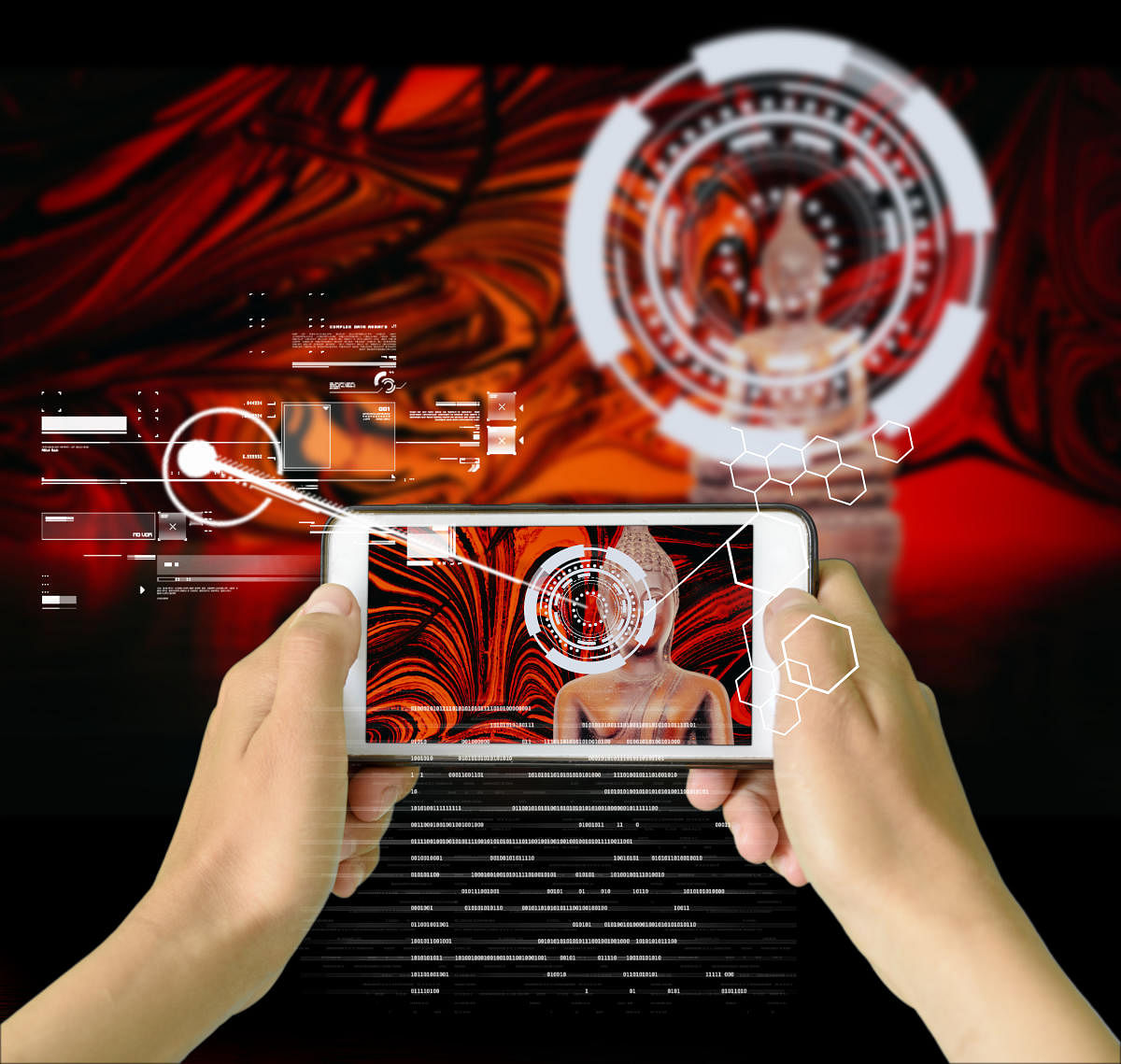
Technology has affected the making of Art immensely, to put it mildly. With the advent of digital art, videos, audiovisual and interactive installations, it is slowly but surely influencing how we engage and experience Art. Over the past few years, technology has increasingly been integrated into museums in the form of Virtual Reality (VR) and Augmented Reality (AR) to offer immersive experiences to visitors.
For starters, it adds several layers of information to the exhibits. Take for instance the Louvre in Paris, which recently launched ‘Mona Lisa: Beyond the Glass’, a VR experience that explores the Renaissance painting as part of its Leonardo da Vinci exhibition. Through interactive design, sound and animated images, additional details about the painting are offered and the VR experience can also be downloaded from VR app stores for the duration of the exhibition.
So, on the one hand, there is an enhancement of sensory and educational experience in the viewing of Art in museums and galleries, while on the other, technology-enabled viewing rooms serve as an alternative to physical viewing. It essentially means that you can view the art exhibition in the comfort of your home or office on your smart gadget.
Another pioneering effort comes from ‘Google Arts & Culture’, created by the Google Cultural Institute, which allows viewers to explore art collections from around the world through panoramic views of well-known art and culture sites. It also offers 360 degree and street view tours. Today, virtual tours, complete with 3D views, interactive screens and other features that enhance the viewing experience, are fairly common in the real estate market in India, but these have not yet been integrated into the art world to the same extent.
Art Basel, which cancelled its fair in Hong Kong due to the Coronavirus threat, will provide Online Viewing Rooms, an additional digital platform for its exhibitors to present their programmes and artists to Art Basel’s global network of collectors, buyers and art enthusiasts. This facilitates presenting the same artworks on a virtual augmented platform — one that is distinct from a ‘regular’ online or website experience.
Digital platforms with software or applications that replicate art exhibition displays, add information layers, offer 360-degree views and close-ups are going to become more popular. These will allow artists and galleries to enhance their websites, organise as well as display virtual shows, which can then be viewed on smartphones and laptops. There are already apps that scan QR codes placed next to artworks using which one can scan the artwork and obtain all related information on one’s phone.
All this has changed and will continue to alter how we consume Art. Eventually, it will become a multi-sensory experience, offering extended learning opportunities, and perhaps best of all, pull the techno-savvy smartphone user into the art world.
The author is a Bangalore-based art consultant, curator and writer. She blogs at Art Scene India and can be reached on artsceneinfo@gmail.com
Dab Hand is your fortnightly art world low-down. It will tell you all about what fresh ideas are out there, what to collect and what to admire from afar. And, of course, what not to.